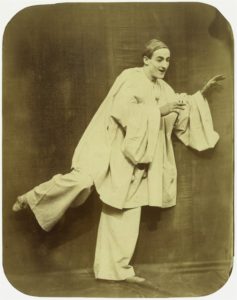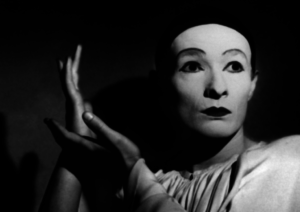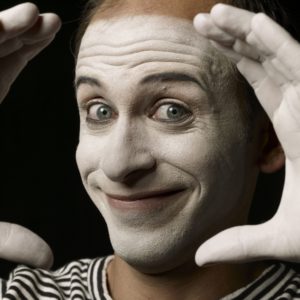Definition of Pantomime:
What is pantomime?
No single definition of pantomime will satisfy everyone. However, it can be described as the art of using movement and facial expressions, rather than primarily spoken words, to communicate. The term “pantomime” refers to both an individual performer and a specific production or performance. Although an individual may also be called a mime, some argue that “pantomime” should only refer to a production, a view that contradicts both historical and modern usage of the term.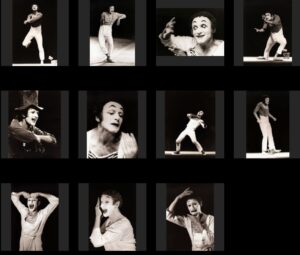
Pantomime skills, which evolved from dance and circus-related acrobatics, are evident in early silent films. However, pantomime as an independent modern art form appears to be lacking. Today, most pantomime is integrated into other theatrical forms rather than standing alone as a distinct art. Many clowns incorporate elements of pantomime rather than presenting themselves strictly as mimes.
In situations where verbal communication is hindered by language barriers, actions mimicking communication are often described as “mimicking.” Similarly, dance interpretations of music have long been considered a form of pantomime by some. These examples showcase the pantomime skill of silently communicating through body movements.
History
The beginning
The Greek term “pantomimus,” meaning “imitating all,” was a highly respected form of solo dancing often set to music, encompassing both comedy and tragedy. Its popularity spread from Greece to Rome until the Christian Church banned its public display. While some claim this Roman dance form persisted through the Middle Ages, evidence to support this is scarce. Theatre forms often seek legitimacy by claiming lineage from ancient traditions, suggesting a possible motive for such assertions.
During the Italian Renaissance, the improvisational theatre form known as Commedia dell’arte introduced a new style of pantomime, which became particularly prominent in Paris. Characters like Pagliaccio or Pedrolino (known as Pierrot in English) and Arlecchino (Harlequin) became iconic figures in these productions.
From the 1600s, English performing troupes traveled across Europe without needing to learn local languages, integrating elements of Commedia dell’arte into their shows. By the 18th century, pantomime had become a popular alternative to royal ballet across Europe, often performed in Parisian fairground theaters with elaborate set and costume changes, but without spoken text.
18th and 19th Centuries:
Post the death of Louis XIV in 1715, pantomimes played a role in loosening performance regulations, promoting a new era of unrestricted artistic expression in French high society. The Glorious Revolution in 1688 in England and the French Revolution in 1789 further liberated theatrical expression, influencing pantomime and other forms of performance across Europe.
The 19th century saw pantomimes as a form of entertainment opposing the royal ballet, often linked to the circus. Figures like Joseph Grimaldi revolutionized clowning and established fixed characters for stories, a tradition that continues in English pantomime performances, particularly during Christmas.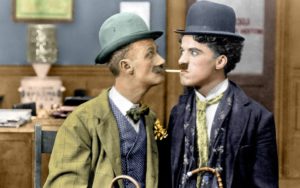
20th Century
The 20th century blurred the lines between pantomime, circus acrobatics, and dance, with influences from music halls and silent film. Modern pantomimes drew from various theatrical reforms and were marked by figures like Étienne Decroux and Marcel Marceau, who refined mime into a distinct art form, often integrated into modern street performances and breakdancing.
Despite shifts toward more integrated forms of performance, classical pantomime as envisioned by pioneers like Marceau has seen a decline in popularity, with contemporary pantomimes often struggling to find platforms to present their art in its purest form.
Pantomime Today:
Evolving Roles and Contemporary Challenges
In the modern era, pantomime continues to adapt and evolve, reflecting changing cultural contexts and audience expectations. Although traditional pantomime as a standalone art form has waned in mainstream popularity, its influence permeates a wide array of contemporary performing arts. Street performances and breakdancing, for instance, frequently incorporate pantomimic elements, utilizing non-verbal communication to engage diverse audiences.
Today’s pantomimes often face the challenge of staying relevant in a world saturated with digital entertainment options. Artists are compelled to innovate continuously, blending pantomime with modern technology and new media forms. For example, interactive theater experiences and virtual reality (VR) performances have begun incor
porating pantomime techniques to enhance the immersive experience of digital storytelling.
Furthermore, the globalization of entertainment has allowed pantomime artists to reach an international audience. However, this also means adapting performances to cater to a broader range of cultural sensitivities and expressions. Modern pantomimes must balance the preservation of traditional elements with the integration of universal themes that resonate across different cultures.
Educational institutions and specialized schools like the École Internationale de Théâtre Jacques Lecoq in Paris and the Scuola Teatro Dimitri in Switzerland continue to train artists in the intricate skills of pantomime. These institutions emphasize the importance of body language and physical expression, underscoring the enduring relevance of pantomime as a fundamental aspect of performing arts education.
Despite the challenges, the essence of pantomime—expressing narratives through silent, expressive gestures—remains a powerful tool in the arsenal of performing artists. As society progresses, pantomime adapts, continually finding new ways to convey profound emotions and stories without uttering a single word, ensuring its place in the future of performance art.
Wikipedia Germany

